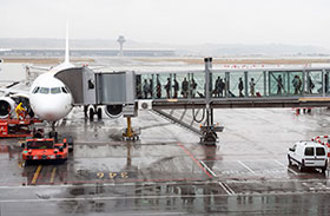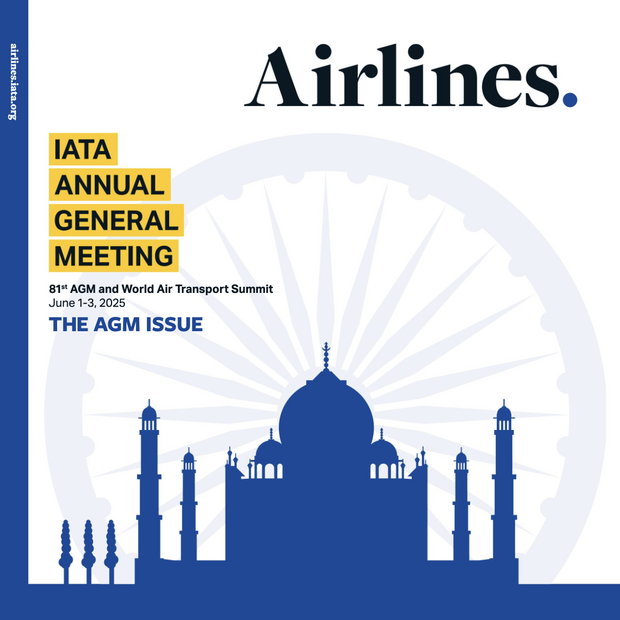
Translations:
الطلب على الرحلات الجوية يواصل نموه خلال شهر أكتوبر (pdf)
El transporte aéreo de pasajeros continuó en la senda de la recuperación en octubre (pdf)
国际航协:10月客运需求持续复苏 (pdf)
Geneva - The International Air Transport Association (IATA) announced that the ongoing recovery in passenger demand continued in October.
Total traffic in October 2023 (measured in revenue passenger kilometers or RPKs) rose 31.2% compared to October 2022. Globally, traffic is now at 98.2% of pre-COVID levels.
Domestic traffic for October rose 33.7% versus October 2022, driven by the triple-digit percentage growth recorded in China, and was 4.8% above the October 2019 results.
International traffic climbed 29.7% compared to the same month a year ago. All markets saw double-digit percentage gains year on year. International RPKs reached 94.4% of October 2019 levels.
“October’s strong result brings the industry ever closer to completing the post-pandemic traffic recovery. Domestic markets remain above pre-COVID levels. International demand is recovering, but more slowly. In particular, Asia Pacific carriers’ international demand is 19.5% behind 2019. This could reflect the late lifting of COVID restrictions in parts of the region as well as commercial developments and political tensions, ” said Willie Walsh, IATA’s Director General.
Air Passenger Market in Detail
| October 2023 (% year-on-year) | World Share1 | RPK | ASK | PLF(%-PT)2 | PLF(Level)3 |
|---|---|---|---|---|---|
| Total Market | 100% | 31.2% | 29.4% | 1.2% | 83.1% |
| Africa | 2.1% | 21.4% | 29.0% | -4.4% | 70.7% |
| Asia Pacific | 22.1% | 90.9% | 77.9% | 5.6% | 82.1% |
| Europe | 30.8% | 14.7% | 12.4% | 1.7% | 85.6% |
| Latin America | 6.4% | 13.6% | 12.0% | 1.3% | 84.8% |
| Middle East | 9.8% | 23.9% | 21.4% | 1.6% | 80.6% |
| North America | 28.8% | 10.5% | 13.7% | -2.4% | 83.6% |
1) % of industry RPKs in 2022 2) Year-on-year change in load factor 3) Load Factor Level
International Passenger Markets
Asia-Pacific airlines saw an 80.3% increase in October 2023 traffic compared to October 2022, continuing to lead the regions. Capacity climbed 72.5% and the load factor increased by 3.6 percentage points to 82.9%.
European carriers’ October 2023 traffic rose 16.1% versus October 2022. Capacity increased 14.5%, and load factor edged up 1.2 percentage points to 85.1%,
Middle Eastern airlines posted a 24.1% rise in October 2023 traffic compared to a year ago. Capacity rose 22.2% and load factor climbed 1.2 percentage points to 80.6%. There was little impact at the regional and global levels from the Israel-Hamas war, despite reduced airline operations to/from Israel.
North American carriers had a 17.5% traffic rise in October 2023 versus the 2022 period. Capacity also increased 17.5%, and load factor was stable at 83.9%.
Latin American airlines’ traffic rose 21.2% compared to the same month in 2022. October capacity climbed faster -- up 22.3% -- pushing load factor down 0.8 percentage points to 85.3%, highest among the regions.
African airlines saw a 25.3% traffic increase in October 2023 versus a year ago. October capacity was up 32.4% causing load factor to decline 4.0 percentage points to 70.3%, lowest among the regions.
Domestic Passenger Markets
| October 2023 (% year-on-year) | World Share1 | RPK | ASK | PLF(%-PT)2 | PLF(LEVEL)3 |
|---|---|---|---|---|---|
| Domestic | 41.9% | 33.7% | 31.8% | 1.2% | 83.0% |
| Domestic Australia | 1.0% | 7.5% | 11.4% | -3.1% | 83.0% |
| Domestic Brazil | 1.5% | 8.9% | 3.3% | 4.3% | 83.3% |
| Domestic China P.R. | 6.4% | 252.6% | 188.2% | 14.7% | 80.6% |
| Domestic India | 2.0% | 10.0% | 9.2% | 0.6% | 83.7% |
| Domestic Japan | 1.2% | 7.8% | -2.3% | 7.5% | 79.8% |
| Domestic US | 19.2% | 7.9% | 12.9% | -3.8% | 83.2% |
1) % of industry RPKs in 2022 2) year-on-year change in load factor 3) Load Factor Level
Brazil’s domestic RPKs rose 8.9% compared to a year ago and were 1.1% above the 2019 result.
US domestic demand climbed 7.9% in October, but this was exceeded by a 12.9% rise in capacity, pushing domestic load factor down for a third straight month, to 83.2%.
Air Passenger Market Overview - October 2023
| October 2023 (% CH vs same month in 2019) | World Share1 | RPK | ASK | PLF (%-PT)2 | PLF (LEVEL)3 |
|---|---|---|---|---|---|
| Total Market | 100.0% | -1.8% | -3.0% | 1.0% | 83.1% |
| International | 58.1% | -5.6% | -7.8% | 2.0% | 83.2% |
| Domestic | 41.9% | 4.8% | 5.5% | -0.6% | 83.0% |
1) % of industry RPKs in 2022 2) year-on-year change in load factor 3) Load Factor Level
The Bottom Line
“People assign a high value to the freedom to travel. The strong demand we’ve seen all year confirms that. And aviation is committed to ensuring that people can continue to enjoy this freedom. To do that in the long-term, we must also meet our commitment to achieve net zero carbon emissions by 2050. Last month, the Third Conference on Aviation Alternative Fuels (CAAF/3) agreed a global framework to promote Sustainable Aviation Fuel (SAF) production with the aim that aviation fuel in 2030 is 5% less carbon intensive than fossil fuel used today. Now, governments need to support that target by immediately putting in place policies to stimulate SAF production. It bears repeating: last year, every drop of SAF that was produced was purchased. The same thing will occur this year. But, with a few notable exceptions, governments are not living up to their obligations to ensure SAF is plentiful and affordable to support the industry’s energy transition,” said Walsh.
> View the October Air Passenger Market Analysis (pdf)
For more information, please contact:
Corporate Communications
Tel: +41 22 770 2967
Email: corpcomms@iata.org
Notes for Editors:
- IATA (International Air Transport Association) represents some 350 airlines comprising over 80% of global air traffic.
- You can follow us on X for announcements, policy positions, and other useful industry information.
- Fly Net Zero
- Statistics compiled by IATA Economics using direct airline reporting complemented by estimates, including the use of FlightRadar24 data provided under license.
- All figures are provisional and represent total reporting at time of publication plus estimates for missing data. Historic figures are subject to revision.
- Domestic RPKs accounted for about 42.1% of the total market in 2022. The six domestic markets in this report account for 31.4% of global RPKs.
- Explanation of measurement terms:
- RPK: Revenue Passenger Kilometers measures actual passenger traffic
- ASK: Available Seat Kilometers measures available passenger capacity
- PLF: Passenger Load Factor is % of ASKs used. - IATA statistics cover international and domestic scheduled air traffic for IATA member and non-member airlines.
- Total passenger traffic market shares by region of carriers for 2022 in terms of RPK are: Asia-Pacific 22.1%, Europe 30.8%, North America 28.8%, Middle East 9.8%, Latin America 6.4%, and Africa 2.1%.

